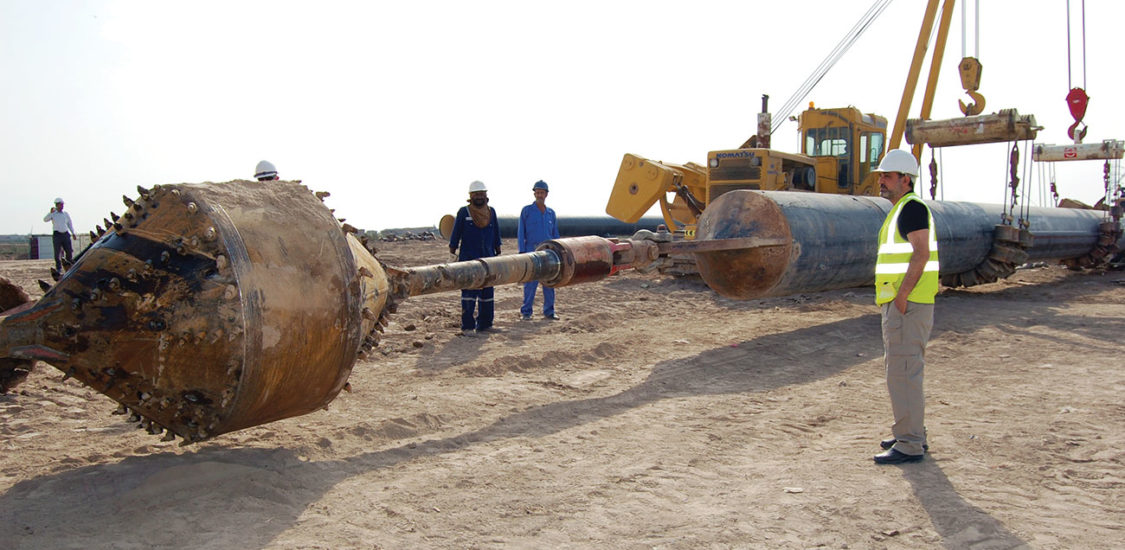Directional drilling has changed the manner industries approach excavation below the surface and installation projects. By allowing operators to bore at different angles and levels, this groundbreaking technique both improves and maximizes efficiency but also minimizes disturbances to the above-ground environment. As urban areas growing and the need for facilities increases, comprehending the concepts and methods behind directional drilling is essential for success in difficult terrains.
In the following text, we will investigate the basics of directional drilling, discussing its evolution, different uses, and main benefits over traditional drilling methods. From the oil and gas industry to installing utilities and renewable energy projects, directional drilling is revolutionizing how we approach difficult underground issues. By examining the technical aspects, equipment utilized, and actual case studies, readers will acquire valuable insights into why this technique is vital for contemporary infrastructure development, especially in fragile or crowded locations.
Understanding Directional Drilling
Directional drilling is a specific technique utilized in the drilling industry to create angled or curved boreholes rather than sticking to a vertical path. This method allows operators to attain targets that are located horizontally or at an angle from the drilling site, optimizing access to resource deposits such as oil, gas, and minerals that are otherwise challenging to reach. The process enables greater flexibility in drilling operations, accommodating various geological formations and natural conditions.
At its heart, directional drilling combines advanced technology with engineering principles to navigate the subsurface terrain. By using tools such as mud motors and rotating drill bits, drillers can manage the direction and depth of the borehole. The use of advanced bore tracking and monitoring systems additionally enhances precision, ensuring that operators maintain the desired trajectory throughout the operation. This level of control is crucial for increasing efficiency and minimizing risk during drilling.
The applications of directional drilling extend across multiple industries, such as oil and gas but also in utilities and renewable energy projects. For instance, directional drilling plays a critical role in installing pipelines and utilities with minimal surface disruption, which is particularly important in urban areas where space is scarce. As the demand for sustainable infrastructure increases, the versatility and effectiveness of directional drilling continue to position it as a vital technology for various applications in difficult terrains.
Advantages of Horizontal Drilling

Directional drilling offers multiple benefits over conventional drilling methods, making it a popular choice for various projects. One of the primary benefits is its ability to access difficult-to-reach areas without extensive surface disruption. This technique allows operators to bore at multiple inclinations and depths, targeting specific formations while minimizing the effect on the surrounding area. As a result, directional drilling is especially beneficial in metropolitan areas where room is limited and surface disruption can lead to major challenges.
Another benefit of horizontal boring lies in its economic viability. By maximizing the drill trajectory and reducing the quantity of drilling locations needed, firms can save both resources and money. Directional drilling often leads to quicker project finishing duration, which translates to lower labor costs and faster paybacks on investment. This effectiveness helps companies manage budgets more effectively, making directional boring an appealing option for many sectors, including oil and gas, utilities, and alternative energy.
Additionally, directional boring enhances the safety and dependability of boring operations. With cutting-edge tools like trajectory tracking and monitoring systems, drillers can ensure greater precision and prevent costly mistakes during the boring process. Safety is further improved by avoiding obstacles such as subsurface infrastructure and reducing the risk of ecological damage. As a result, horizontal boring contributes to safer work environments and more effective project results, solidifying its role as a key method in contemporary boring methods.
Future Trends in Directional Drilling
As the demand for increasingly effective drilling practices increases, the future of directional drilling is poised to be shaped by various emerging technologies. Innovations such as advanced data analytics and real-time monitoring systems will allow for improved precision in drill paths, eventually reducing costs and time allocated on tasks. These technologies are expected to offer operators comprehensive insights into drilling conditions, enabling more rapid adjustments and enhanced overall performance.
AI and automation are also making significant strides in the directional drilling landscape. With AI algorithms analyzing geological data and operational parameters, companies can enhance drilling strategies, forecasting potential challenges before they arise. Automated systems will help minimize human error, leading to safer operations and higher success rates in complex drilling environments. The integration of these technologies not only enhances efficiency but also invites a new generation of skilled professionals eager to work with cutting-edge tools.
In addition, the role of directional drilling in sustainable infrastructure development will become increasingly important. As urban areas continue to grow and expand, the need for minimal surface disruption and environmental preservation will drive the adoption of directional drilling techniques. With increased awareness of ecological impacts, companies are dedicating resources to improving practices that support sustainable goals, such as incorporating eco-friendly drilling fluids and enhancing energy efficiency throughout the drilling process. Directional Drilling Ireland to sustainability will be crucial in meeting the demands of future projects while balancing the needs of communities and the environment.
